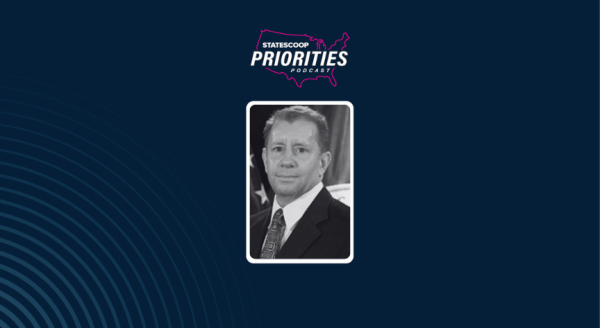
- Sponsored
The future of work for state and local governments
The pandemic response resulted in state and local agencies making rapid changes to network systems so more government employees could access agency resources remotely. In many ways, however, that also laid the groundwork for organizations to enable greater flexibility in how employees will work in the future.
Even as state and local government leaders lay out plans to return to the office, a recent Cisco survey found that workers expressed interest in returning to a schedule that allowed working remotely three days a week — up from the more traditional one day a week, according to Marc Moffett, senior engineering leader and CTO, U.S. public sector at Cisco, in a new podcast.
That would represent a significant uptick in hybrid workforce demands and require CIOs and CISOs to continue modernizing their infrastructure in order to further support hybrid work.
“At Cisco, we’ve really netted things down to four key priorities that customers are focused on. And that’s reimagining their applications, empowering their teams, transforming their infrastructure and securing their data,” says Moffett in the podcast, produced by StateScoop and underwritten by Cisco.
He discusses some of these key challenges and examples of how some state government organizations are working to enable a modern and more secure approach to working remotely.
Empowering the workforce
Moffett recalls a recent conversation he had with a CIO, who said that prior to the pandemic, a majority of his executive team couldn’t explain much about the collaborative solutions they were using. Now, post-pandemic, “all 32 of them not only knew what [solutions they use], but they knew how to use it fluently,” Moffett recounted.
In order to empower the workforce in a hybrid work environment, Moffett says it requires a combination of having the right tools and providing a quality user experience and training so that “both your internal users and your citizens can use technology effectively.”
What has primarily been a very “face-to-face business,” has changed with new digital services, because “government leaders are able to, in many cases, reach people that they typically would not have spoken to,” says Moffett. The pace of digital transformation allows agencies to improve how they deliver citizen services with agility and speed.
He cites other examples, in which court systems have streamlined hearings, and instances where lawmakers have been able to interact with stakeholders online. These changes, he says, “have allowed government workers to be more productive and helped citizens get the services they need.”
Mitigate security threats
Distributing the network environment unfortunately provides greater opportunity for security breaches. To illustrate this point, Moffett pointed to research that indicated 37 billion records had been exposed last year through breaches.
“That’s a 141% increase in records exposed due to breaches over the prior year,” he says. He also notes the number of ransomware cases has increased 100% over the same period.
When you’re talking about the exponential increase of breaches, records exposure and ransomware — and you factor in how business has accelerated how things are moving to the cloud and the workforce is distributed — it adds a lot or risk to the organization.
“If you think about these risks, you need to also evaluate if you have the right type of staff. But if you don’t — are you working with the right company that has those threat hunters or that capability to make sure that you’re being taken care of?” Moffett says.
Addressing the digital divide among states
Moffett also raises the issue that not all state and local organizations are equal when it comes to access to broadband and reliable connectivity. That may limit the flexibility some agencies can provide to their employees. Moffett says that in recognition of the imbalance of broadband access, Cisco’s Country Digitization Acceleration Group has been partnering with governments to address this disparity.
Moffett says that Cisco has partnered with states like Arizona, and cities like Dallas, to install new wireless access points in local libraries.
“One of the coolest ones is we partnered with Canutillo school district in Texas to extend broadband using our fast, reliable [Ultra-Reliable Wireless Backhaul], in partnership with our Meraki solution, to put access points out to some of the areas where [access is challenging],” shares Moffett.
Listen to the podcast for the full conversation on the future of work in state and local government. You can hear more coverage of “IT Modernization in Government” on our StateScoop radio channels on Apple Podcasts, Spotify, Google Play, Stitcher and TuneIn.
This podcast was produced by StateScoop and underwritten by Cisco.
Marc Moffett has more than three decades of systems engineering and management experience, including more than eight years serving in the U.S. Air Force. He’s held a number of senior leadership positions in his two decades at Cisco, where he currently oversees more than 500 systems engineers and architects in support of Cisco’s public sector customers.


